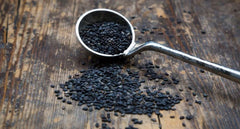Phosphorus is essential to the structure and operation of a plant because it is utilised in numerous crucial metabolic activities. It is common knowledge that sunlight-harvesting phosphorus may convert sunlight into plant-usable compounds.
Phosphorus is an essential component of DNA, the "memory" of all living organisms. It is also a component of RNA, which aids in the manufacture of proteins and other molecules essential for plant structure, seed production, and the transfer of genetic information. A phosphorous link holds together the building units of DNA and RNA.
Phosphate is an essential component of plants' "energy unit." Phosphorus-containing ATP is a crucial molecule in photosynthesis, as well as in the development of seedlings, the production of grains, and the maturation of plants.
Because of this, all plants require phosphorus to thrive and grow. Phosphate promotes the development of the following:
- By strengthening the stems and stalks, root arousal increased the number of blooms and seeds.
- Now, crops mature more frequently and sooner than in the past.
- Enhancing legumes' ability to fix nitrogen
- As the quality of crops improves, the likelihood of illness decreases.
- At each stage of life, individuals are helped to develop.
Phosphorus deficiency in plants is more difficult to detect than deficiencies in nitrogen or potassium. When crops lack sufficient phosphorus, early-stage plant growth is frequently stunted. When the issue is discovered in perennial crops, it may be too late to remedy it. When there is insufficient phosphorus, plants such as corn take on an odd yellow hue. The plants, which are typically a dark bluish-green colour, have different-colored leaves and stems. Depending on how the plant's genes are constructed, some hybrids become significantly more purple than others. When sugar accumulates in the plant's leaves, anthocyanin is produced (a purplish-colored pigment).
Phosphorus can migrate from older to younger plants in the absence of the mineral. Consequently, phosphorus causes plants to develop rapidly. As a plant ages, it transfers phosphorus to its blooming and fruiting regions, which require a great deal of energy to produce seeds and fruit. When there is insufficient phosphorus late in the growing season, it can impact both seed growth and crop maturation. Not until the conclusion of the growing season do nitrogen and potassium begin to use a greater proportion of their entire amounts.
The majority of surface soils have less than 0.6% phosphorus. Normal soil nitrogen and potassium concentrations are 0.14 and 0.83 percent, respectively. The amount of phosphorus in sandy soils along the Atlantic and Gulf coasts ranges from less than 0.04 percent P2O5 to more than 0.3 percent P2O5 in the northwest.
Phosphorus content in the soil is affected by a variety of factors.
- Utilizing a specific substance as a soil base
- How extensive are weathering and erosion?
- Temperatures and other environmental variables
- Clearing the fields and applying fertiliser
Therefore, we can conclude that phosphorus is not a micronutrient.





